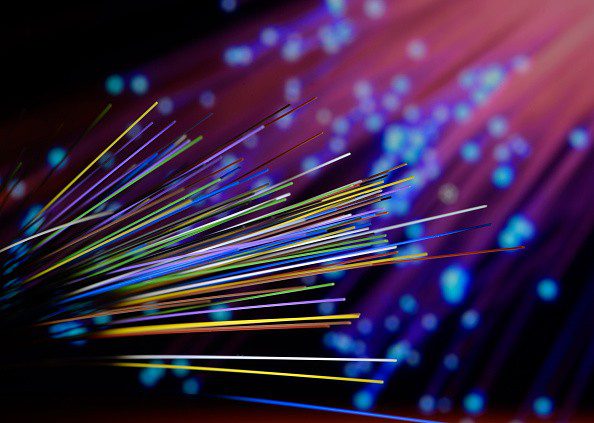Recently, scientists in Germany have achieved an astounding Internet transmission speed of 1 Terabit per second (1 Tbps) over a fiber optic network. At this speed, you can download data more than 1,000 times faster than current services such as Google Fibre, which typically offers speeds of 1 Gigabit per second (1 Gbps).
While the 1 Gbps speed offered by Google Fibre is already sufficient for many users who are still stuck with slower connections like ADSL and traditional cable, it cannot compete with the new 1 Tbps internet transmission speed.
At this remarkable speed, you can download 125 GB every second, which is equivalent to the storage capacity of a MacBook Air. In just one second, you could even download the entire Game of Thrones series in high definition without any compression. Alternatively, you could download 25 films, each with a size of 5 GB, within the same second.
All of these incredible capabilities are made possible by a new signal transmission technique called Probabilistic Constellation Shaping (PCS). This technology allows researchers from the Technical University of Munich, Nokia Bell Labs, and Deutsche Telekom’s research facility to achieve the 1 Tbps transmission speed over Deutsche Telekom’s existing fiber optic network.
However, this speed was achieved under specialized laboratory conditions, meaning it could potentially be deployed on existing fiber optic infrastructure in real-world scenarios. This is particularly significant because, in the past, we have seen scientists demonstrate internet transmission speeds that were only achievable under laboratory conditions.
Earlier this year, researchers in the UK reached a transmission speed of 1.125 Tbps using a specialized system that transmits information over a fiber optic cable across 15 channels simultaneously, creating what the research group referred to as a “super channel.” Last year, another UK research group also achieved a download speed of 1 Tbps in a laboratory setting, this time utilizing a 5G wireless network to transmit data over a distance of 100 meters.
Conversely, the new record achieved by the German research team was based on “real-world conditions,” as described by Nokia.
The PCS technique operates by increasing the efficiency of selecting which data will be transmitted over the fiber optic channel. This software ensures that lower amplitude signals—referred to as data constellations—are employed with significantly larger quantities compared to higher amplitude signals.
According to researchers, this will allow transmission speeds to be adjusted to better suit specific transmission needs, meaning the signals will be less sensitive to various impairments on the line and other issues.
As reported by Liam Tung at ZDNet, by utilizing PCS technology, the research team achieved the 1 Tbps speed while transmitting data between cities in Germany, such as Stuttgart and Darmstadt, as well as between Stuttgart and Nuremberg. However, they also noted that the speed decreased slightly, only reaching 0.8 Tbps when transmitting data between Stuttgart and Berlin.
This discovery was only presented this week at the European Conference on Optical Communications (ECOC) 2016 in Düsseldorf, Germany, and has not yet been confirmed by other research teams.
Unfortunately, there has been no announcement regarding when this technology might be rolled out for internet users worldwide.
Although the PCS technology can operate on existing fiber optic networks, internet service providers (ISPs) will need to adjust their systems to be compatible with the requirements of this new technology. This implies that users may have to wait a bit longer before they can download the entire series of Game of Thrones in just one second.
It is clear that while these advancements are remarkable, they still depend on the readiness of infrastructure and technology to meet these evolving demands.
Source: GenK























